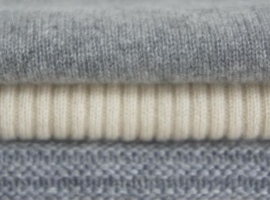Besides cashmere, we can also supply sweaters with many kind materials, like merino, mohair, silk, alpaca, blend yarn depend on customer’s special demands.
Here are some common and precious textile animal fibers:
Wool
Source: Wool mainly comes from sheep, and the quality of wool produced by different breeds of sheep varies.
Characteristics: Wool has good insulation, moisture absorption, and breathability. Its fiber structure helps to capture air, thereby isolating the outside world from heat and cold. Wool also has a certain natural elasticity and wrinkle resistance.
Usage: Widely used for making sweaters, jackets, carpets, bedding, etc.
Mohair
Source: Mohair is from Angora goat, which is native to Anatolia, Türkiye.
Characteristics: Sea hair is known for its luster and silky texture, with slender and smooth fibers that have excellent luster and wear resistance.
Usage: Commonly used for making high-end sweaters, scarves, jackets, etc.
Alpaca wool
Source: Alpaca wool comes from alpaca and is mainly produced in regions such as Peru, Bolivia, and Chile in South America.
Features: Alpaca wool is softer and lighter than wool, while also providing excellent warmth and durability. It is usually divided into several different grades, including baby alpaca hair (the finest) and adult alpaca hair.
Usage: Suitable for making luxury sweaters, scarves, hats, socks, etc.
Vicu ñ a
Source: Luo Ma Mao comes from Luo Ma, a small camel family animal that lives in the Andes Mountains of South America.
Characteristics: Camel hair is considered one of the rarest and most expensive animal fibers, with finer, lighter, and softer fibers than alpaca hair, providing excellent warmth retention.
Usage: Due to its rarity, it is commonly used to make high-end fashion items such as scarves, sweaters, and jackets.
Silk
Source: Silk is a continuous protein fiber formed by silkworms spinning silk, which is processed and used for textile production.
Characteristics: Real silk is known for its smoothness, softness, luster, and elegant drape. It is a porous fiber with good moisture absorption and breathability, and is also a strong and tough fiber.
Usage: Widely used in the production of high-end clothing, ties, pajamas, curtains, and other luxury textiles.




There are no comments